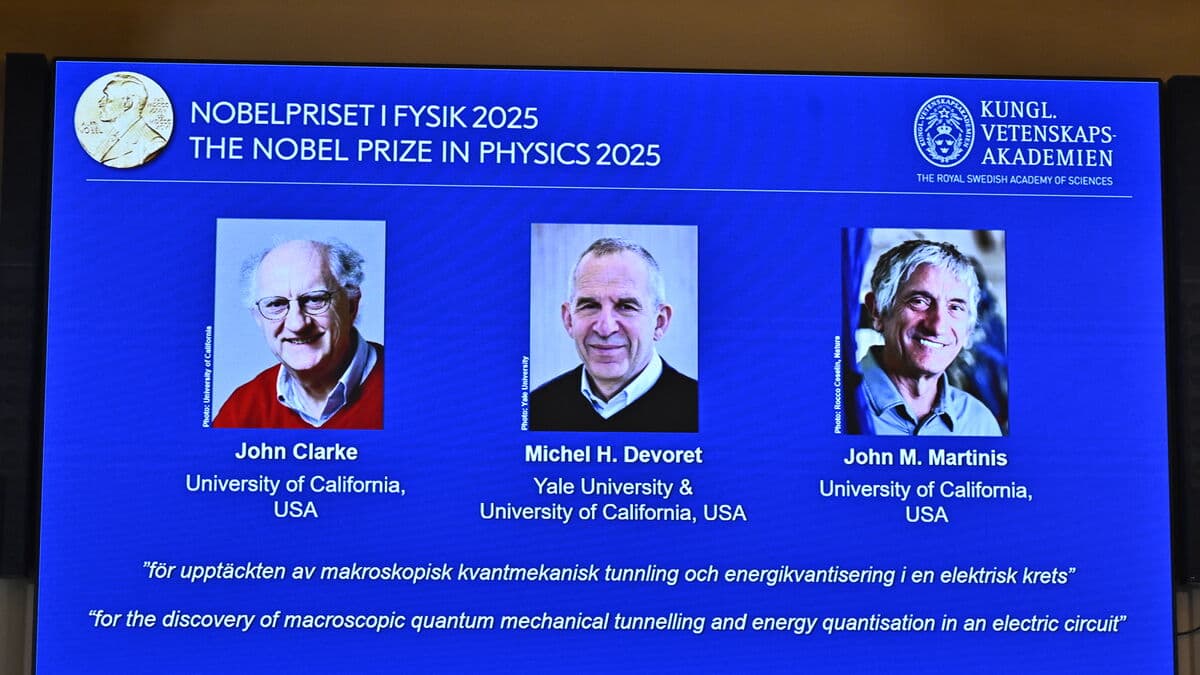John Clarke, Michel H Devoret and John M Martinis are awarded "for the discovery of macroscopic quantum mechanical tunneling and energy quantization in an electric circuit".
John Clarke was born in the United Kingdom in 1942. Michel H Devoret was born in 1953 in France. The American John M Martinis was born in 1958.
"Talking about it now"
What the prize winners have shown is that quantum mechanical properties such as tunneling also exist on a larger scale than previously thought. When the trio conducted their experiments at Berkeley University in the 1980s, Clarke had no idea that it would lead to a Nobel Prize one day.
It did not occur to us in any way that it would have such a significant impact, says John Clarke at the press conference where the prize is announced.
Clarke may have been the leader of the trio, but would never have been able to make the breakthrough without Devoret and Martinis' efforts, he says.
Passing through the wall
Eva Olsson, professor of experimental physics at Chalmers, explains the prize winners' discoveries as follows:
It's about making a world accessible that lies beyond our ordinary world that we don't immediately understand. An example is this thing with a barrier. We can throw a ball against a wall and get it back. But in this quantum mechanical world, what we throw against the wall can go through the wall, that is, tunneling.
The trio's discoveries have paved the way for the development of the next generation of quantum technology, which in the future could give us tools such as faster quantum computers and quantum sensors. They have, among other things, been able to show that if you lead a current in a superconductor, the current can jump to the next conductor even if there is a break in between where the current is unlikely to be able to pass.
They have opened up for us that we can actually study this little world that is beyond what we understand and experience. I think it's magical, to see and experience something that is normally beyond what we can see, says Eva Olsson.
Corrected: In an earlier version of the text, an incorrect description of the prize winners' discoveries was given.





